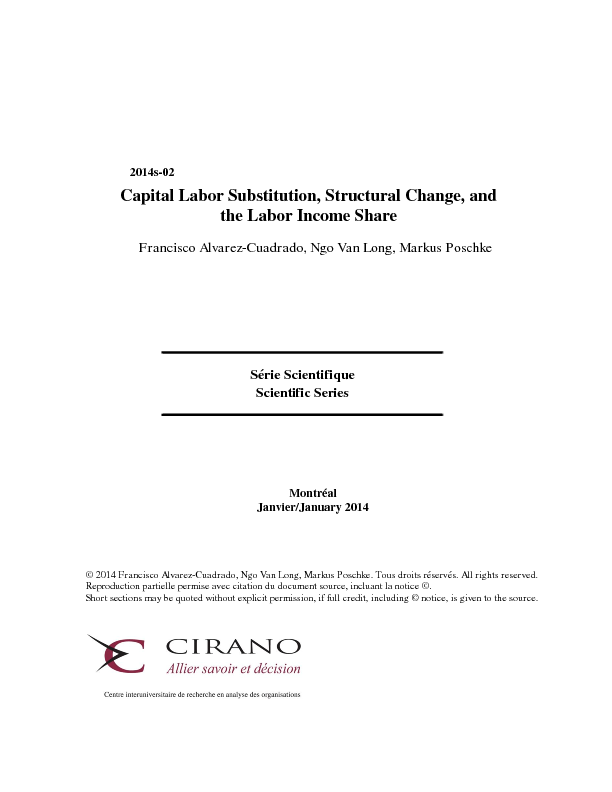Capital Labor Substitution, Structural Change, and the Labor Income Share
Long run economic growth goes along with structural change. Recent work has identified explanatory factors on the demand side (non-homothetic preferences) and on the supply-side, in particular differential productivity growth across sectors and differences in factor proportions and capital deepening. This paper documents that there have also been differential trends in labor and capital income shares across sectors in the U.S., and in a broad set of other industrialized economies, and shows that a model where the degree of capital-labor substitutability differs across sectors is consistent with these trends. The interplay of differences in productivity growth and in the substitution elasticity across sectors drives both the evolution of sectoral factor income shares and the shape of structural change. We evaluate the empirical importance of this mechanism and the other mechanisms proposed in the literature in the context of the recent U.S. experience. We find that differences in productivity growth rates between manufacturing and services have been the most important driver of structural change. Yet, differences in substitution elasticities are key not only for understanding the evolution of sectoral and aggregate factor income shares, but also for the shape of structural change. Differences in capital intensity and non-homothetic preferences have hardly mattered for the manufacturing-services transition.
[ - ]




